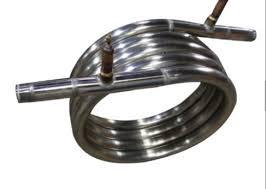In the realm of heating, ventilation, and air conditioning (HVAC) systems, the efficiency and performance of heat exchangers play a critical role in ensuring optimal indoor comfort and energy savings. Coaxial heat exchangers have emerged as a popular choice for HVAC applications due to their unique design and numerous advantages. In this blog post, we will explore the benefits of using https://www.yojointernational.com/Coaxial-Heat-Exchanger/Coaxial-Heat-Exchanger.shtmlin HVAC systems and how they contribute to improved efficiency and performance.
Introduction to Coaxial Heat Exchangers
Coaxial heat exchangers are a type of heat exchanger that consists of two concentric tubes, where one tube is nested inside the other. The inner tube carries the fluid that needs to be heated or cooled, while the outer tube carries the heat transfer fluid. This design allows for efficient heat transfer between the two fluids, making coaxial heat exchangers an ideal choice for HVAC systems where heat exchange is a critical component.

Advantages of Coaxial Heat Exchangers in HVAC Systems
1.High Efficiency:
One of the key advantages of coaxial heat exchangers in HVAC systems is their high efficiency. The concentric tube design maximizes the surface area available for heat transfer, allowing for efficient exchange of thermal energy between the two fluids. This results in improved heating or cooling performance, leading to reduced energy consumption and lower operating costs for HVAC systems.
2.Compact Design:
Coaxial heat exchangers are known for their compact and space-saving design, making them ideal for applications where space is limited. The concentric tube configuration allows for a large heat transfer surface area within a small footprint, making coaxial heat exchangers well-suited for installation in tight spaces or retrofitting into existing HVAC systems.
3.Corrosion Resistance:
Another advantage of coaxial heat exchangers is their excellent corrosion resistance. The materials used in coaxial heat exchangers, such as copper or stainless steel, are highly resistant to corrosion, ensuring long-term durability and reliability. This resistance to corrosion is particularly important in HVAC systems where exposure to moisture and harsh environmental conditions can lead to degradation of traditional heat exchangers.
4.Versatility:
Coaxial heat exchangers are versatile in their applications and can be used for both heating and cooling purposes in HVAC systems. Whether it's for transferring heat from a refrigerant to air in a heat pump or exchanging heat between a fluid and the ambient air in an air conditioning system, coaxial heat exchangers offer flexibility and versatility in meeting diverse HVAC requirements.
5.Enhanced Heat Transfer:
The concentric tube design of coaxial heat exchangers promotes enhanced heat transfer efficiency compared to other types of heat exchangers. The close proximity of the two fluid streams allows for a more direct and efficient transfer of thermal energy, resulting in quicker heating or cooling of the desired space. This enhanced heat transfer capability contributes to improved HVAC system performance and comfort.

Conclusion
Coaxial heat exchangers offer a range of advantages in HVAC systems, including high efficiency, compact design, corrosion resistance, versatility, and enhanced heat transfer. By incorporating coaxial heat exchangers into HVAC systems, manufacturers and building owners can benefit from improved energy efficiency, reduced operating costs, and enhanced indoor comfort. With their innovative design and superior performance characteristics, coaxial heat exchangers have become a preferred choice for HVAC applications where reliable and efficient heat exchange is essential.
The Role of Coaxial Heat Exchangers in Renewable Energy Systems

